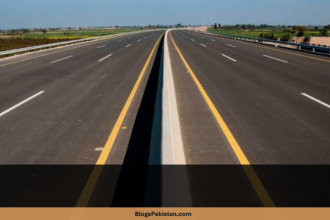Let’s be honest: when someone mentions Pakistan International Airlines (PIA), it’s hard not to think of delayed flights, samosas, and wild tales from the golden era of aviation. But lately, PIA’s story is less about sky-high adventures and more about nose-diving numbers. In 2023, despite a magical-sounding Rs. 26 billion “profit” popping up in the books, the airline actually clocked a net loss of Rs. 4.6 billion. How is that even possible? Grab your boarding pass—because we’re about to embark on a turbulent journey through PIA’s finances.
Unpacking the Mythical Rs. 26 Billion Profit
If you glanced at PIA’s 2023 financial highlights, you might think the airline is making it rain rupees. But, like spotting a unicorn at the departure gate, things aren’t quite what they seem. The Rs. 26 billion “profit” was largely an accounting sleight of hand: a deferred tax asset (DTA) worth Rs. 30 billion.
What’s a Deferred Tax Asset, Anyway?
Simply put, a DTA is a kind of financial IOU that says, “If we ever make enough profit in the future, we won’t have to pay as much tax.” It’s not real cash—just a line on the balance sheet, based on hope, projections, and a prayer that things will get better. The Finance Ministry was quick to clarify: this shouldn’t be confused with actual operational money in the bank.
Take away the DTA, and the truth tumbles out. PIA recorded a pre-tax loss of Rs. 4.58 billion in 2023. Not exactly the sort of number that makes you want to book a celebratory flight.
PIA’s Financial Restructuring: Kicking the Can Down the Runway?
With losses like these, you might wonder why PIA is still flying. Enter: the mother of all airline makeovers. In 2023, PIA underwent a significant restructuring, transferring a mountain of legacy debt and some dusty non-core assets (think buildings and things that have nothing to do with airplanes) to a new holding company.
How Big Was That Debt Mountain?
- Legacy Debt Transferred: Rs. 660 billion
- PIA’s Long-Term Liabilities (Before): Rs. 295 billion
- PIA’s Long-Term Liabilities (After): Rs. 13 billion
- Annual Finance Costs Reduced: Rs. 79 billion → Rs. 10 billion
To put that in perspective, it’s like emptying out your wallet, realizing it’s full of old grocery bills, and then starting fresh with just enough to pay for your next Uber ride.
But, as any desi family knows, shifting debts around doesn’t make them disappear—it just moves the problem.
The Real Problem: PIA’s Operational Baggage
Shuffling numbers is one thing, but running an airline is expensive—especially when you’re dealing with ancient planes and sky-high costs.
PIA’s Ongoing Expenses (2023):
- Total Operational Costs: Rs. 106.6 billion
- Administrative Expenses: Rs. 8.3 billion
- Distribution Expenses: Rs. 8.2 billion
- Exchange Losses: Rs. 2.3 billion (thanks to currency swings and not hedging against them)
Flying, it turns out, is much more expensive than flying kites.
Where Does the Money Go?
A big chunk of PIA’s expenses are tied to administrative overhead and distribution. In other words, a lot of rupees go into keeping the back offices and ticketing systems running, rather than making planes more comfortable or reliable. Add in losses from currency fluctuations, and it’s clear why the airline feels more “turbulent” than “first-class.”
Are Things Actually Getting Better?
After this spring cleaning, PIA’s balance sheet looks slimmer:
- Total Assets: Rs. 187 billion (post-restructuring)
- Current Liabilities: Down from Rs. 482 billion to Rs. 142 billion
- Non-Current Liabilities: Reduced from Rs. 366 billion to Rs. 41 billion
Sounds promising, right? But as the Finance Ministry warns, the airline still faces “solvency risks.” Translation: if something drastic doesn’t change, PIA could be heading for an emergency landing.
The Big Red Flags
- Profit on Paper, But Not in Reality: That DTA is a future dream, not today’s paycheck.
- Operational Losses: The airline’s actual business isn’t making money—yet.
- High Costs: From fuel to HR, expenses remain stubbornly high.
Urgent Flight Plan: What Needs to Change?
The government’s report didn’t just point out problems—it laid out a survival checklist. If PIA wants to avoid a crash landing in the years ahead, here are the top recommendations:
1. Fleet Modernization
PIA’s planes are older than most Karan Johar movie plots. Investing in fuel-efficient, modern aircraft isn’t just about looking good—it cuts costs and attracts passengers who don’t want to feel like they’re flying in a flying museum.
2. Fuel Hedging
With global oil prices bouncing around, smart airlines hedge their fuel costs to avoid nasty surprises. PIA’s currency and fuel exposure have cost billions—hedging could save a lot of heartache (and rupees).
3. Performance-Based HR
It’s time to move beyond “sifarish” and focus on merit. Reward high performers, improve accountability, and streamline the workforce. Less chai, more flying.
4. Tough Cost Negotiations
From suppliers to service providers, every rupee saved is a rupee earned. The airline must renegotiate contracts and cut unnecessary fat.
The Desi Flyer’s Dilemma: Why Should You Care?
You might be thinking: “I fly PIA for the free biryani, not the balance sheet.” But here’s the thing: a strong national airline means more jobs, better connectivity, and national pride. For Pakistanis and Indians alike, the fate of PIA is a lesson in how state-owned enterprises can soar—or stumble—in South Asia.
Will PIA Ever Return to Its Glory Days?
There’s no quick fix. Recovery will require discipline, transparency, and innovation—along with the kind of political willpower usually reserved for cricket matches. But if PIA follows the Finance Ministry’s advice, there’s hope it will one day regain its reputation for reliability, service, and safety.
In a Nutshell: Fasten Your Seatbelts!
The next time someone brags about PIA’s latest profit, ask them: “Is that real money, or just accounting magic?” For now, the airline’s journey is far from smooth—but with the right reforms, there’s still a chance for a safe landing.










